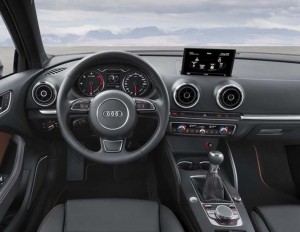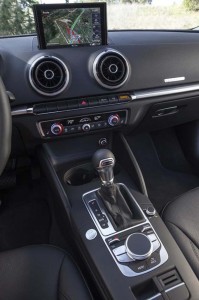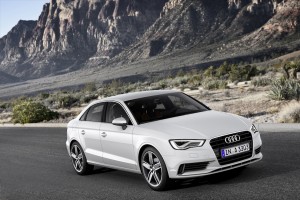As millions of early OnStar users discovered, in-car technology can quickly go out of date. They found their systems shut off when the maker switched from analog to digital a few years back.
Unlike plug-n-play desktop and laptop computers, today’s in-car systems usually can’t be updated as new technology comes out. You either buy a new car or suffer with a slow user interface or an outdated display.
But Audi is about to shift directions in a bid to deliver in-car technology that can keep pace with the rapid changes of consumer electronics. The new 2015 Audi A3, for example, will have a more computer-like graphic display system from NVIDIA, one of the top suppliers for desktop and laptop manufacturers. A couple years from now, a motorist would be able to simply swap out the original video display card for a newer, presumably faster and higher-resolution one.
“We’re trying to marry what’s in the consumer electronics world with what’s in the automotive world,” Audi of America President Scott Keogh explained during a media drive of the new A3 line. “Owners will be able to upgrade so they don’t have to have eight-year-old chips in their car.”
(For a closer look at the new Audi A3, Click Here.)
Desktop computer users are well familiar with the advantages of plug-n-play technology which allows them to switch to faster microprocessors, improved graphic displays, larger hard drives and other updated hardware to keep a computer up-to-date.
That could prove particularly appealing to the growing number of automotive buyers who are putting technology high up on their list of purchase considerations – and it could prove an advantage for a maker, like Audi, that can deliver an upgradeable vehicle.
Until now, most vehicles have offered little to no upgradeability. That’s particularly problematic because of the long lead time in the automotive world. Where it may take a computer manufacturer just months to integrate a new processor or display chip into their hardware, it can take several years to bring a new vehicle to market. And considering the average car on the road is now 11 years old, most are being operated with comparatively primitive technology onboard.
(Audi takes global luxury sales lead – for now. Click Here for the full story.)
Many OnStar users discovered that when, in 2007, the General Motors telematics service abandoned its original analog-based communications system and switched to digital, along with the cellular phone industry. Millions of older vehicles could not be converted over and essentially had the plug pulled out.
But even the latest vehicles can rapidly become outdated as makers introduce newer video displays and more advanced infotainment systems with the latest in user interfaces. There’s an ongoing debate within the industry, for one thing, about the best way to control functions such as radio volume and tuning, and climate control. Some makers continue to rely on knobs and switches, others migrating almost entirely to touchscreens or special controllers like the BMW iDrive.
Audi has its own version, the MMD, but it also introduced a touch sensitive pad, similar to those on laptops. A motorist can, for example enter a number like 6-7 to tune the satellite radio to that channel. The system debuted on Audi’s top-line A8 a couple years ago, but will now be offered on the A3 and TT, as well.
It’s likely automakers will face limits to how much of the car they can allow to be upgraded. While it’s easy to replace a computer monitor, it would be a major challenge to replace the central instrument cluster. But new software could be installed to update a car’s display – especially as more and more makers abandon conventional analog gauges in favor of reprogrammable video displays.
And going forward, many upgrades will likely come in the form of software, rather than hardware enhancements. Lincoln, for example, took hits after the launch of its MKZ sedan because of the poor performance of the MyLincolnTouch interface. Within months, the luxury maker offered owners the ability to either upgrade by using a conventional USB Microdrive or by taking their vehicles in to the nearest dealer.
Tesla, meanwhile, is upgrading some onboard systems using a high-speed wireless connection built into the Model S sedan. Audi could do the same thing with the A3 and other future models that will come equipped with — upgradeable — 4G LTE communications hotspots. General Motors expects to have the same capability as it rolls out 4G technology in its Chevrolet, Cadillac and other products starting with the 2015 model-year.
(For more on GM’s big plans for 4G LTE, Click Here.)
That could make it possible to not only upgrade a motorist’s navigation system, for example, but even skip the process of bringing a car back to the dealer for some basic recalls – at least those that might only require a software update, for example, to resolve a minor emissions or performance problem.



